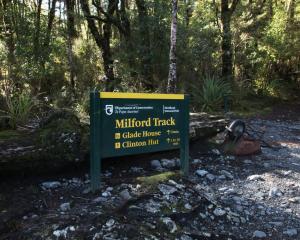A network of tiny sensors will be installed along some of the South's most slippery roads as part of a project to improve safety on the region's state highways.
They will be monitored by a series of roadside weather stations which will help meteorologists predict when ice, surface flooding, and heat are likely to make road conditions worse.
Their predictions and real-time observations will be used to help send contractors and grit-trucks to the places likely to be worst affected by weather events, even before they happen.
MetService industry marketing manager Peter Hollingsworth yesterday confirmed technicians would spend the next 22 weeks installing 19 stations on South Island roads.
Site-specific details were unavailable last night, but Mr Hollingsworth said the northern and southern approaches to Dunedin, and locations around Wanaka and Queenstown were on the list.
"We'll be able to get to the point where we can say what is happening, or what is likely to happen, on specific parts of specific stretches of road," Mr Hollingsworth said.
MetService has a five-year contract to deliver the service to the New Zealand Transport Agency.
The agency's Otago-Southland network manager, Murray Clarke, said the predictions and observations would help the agency decide how to allocate resources, such as grit trucks, across the roading network.
It would be easier to predict which areas would be affected by what weather conditions, and the agency would be able to respond more quickly to "flash" events, such as surface flooding and black ice.
Mr Hollingsworth said the project would cost "in the millions" of dollars.
MetService has been using similar stations in the North Island's Central Plateau since the middle of 2008.












